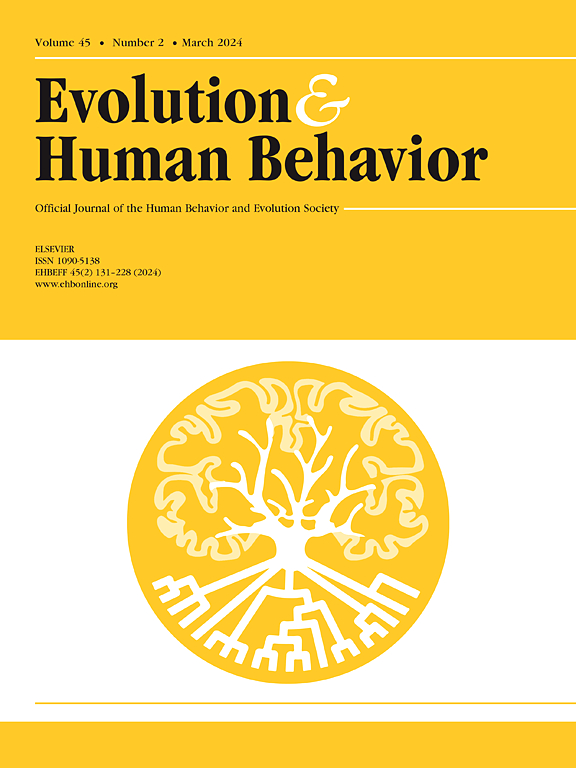Within-species variation eclipses between-species differences in Pan consolation
IF 3.2
1区 心理学
Q1 BEHAVIORAL SCIENCES
引用次数: 0
Abstract
Empathy and its subcomponents are well documented throughout the animal kingdom, indicating the deep evolutionary origins of this socioemotional capacity. A key behavioural marker of empathy is consolation, or unsolicited bystander affiliation directed towards distressed others. Consolation has been observed in our closest living relatives, bonobos (Pan paniscus) and chimpanzees (P. troglodytes). However, systematic comparisons are absent, despite potential for interspecific differences. Bonobos are often considered less aggressive, more emotionally sensitive, and more socially tolerant than chimpanzees—key characteristics purported to drive consolation. Furthermore, social and individual factors also appear to drive intraspecific variation in empathy. To address within- and between-species variability in Pan consolation, we systematically tested the consolatory tendencies of N = 40 bonobos and N = 50 chimpanzees. Bonobos and chimpanzees exhibited similar consolation tendencies; however, within-species analyses revealed further similarities and variation. Bonobo consolation was most often directed towards and received by younger individuals, while chimpanzee consolation was most often directed towards close social partners. In addition, males and females of both species showed decreased consolation with age, with some evidence for chimpanzee males consoling more than young females. Our findings support the notion that within-species variation in Pan socio-emotional abilities is greater than between-species differences, highlighting the presence of striking behavioural diversity across our two closest cousins.
种内变异盖过了种间差异
在整个动物王国中,移情及其子成分都有大量记载,这表明这种社会情感能力有着深厚的进化起源。同理心的一个关键行为标志是安慰,或者说是在旁观者不请自来的情况下对处于困境中的他人的支持。在我们的近亲--倭黑猩猩(Pan paniscus)和黑猩猩(P. troglodytes)身上都观察到了同情行为。然而,尽管种间可能存在差异,但却缺乏系统的比较。与黑猩猩相比,倭黑猩猩通常被认为攻击性更弱、情感更敏感、社会宽容度更高--这些关键特征被认为是促进慰藉的因素。此外,社会和个体因素似乎也会导致同理心的种内差异。为了解决潘氏抚慰的种内和种间变异问题,我们系统地测试了N = 40只倭黑猩猩和N = 50只黑猩猩的抚慰倾向。倭黑猩猩和黑猩猩表现出相似的安慰倾向;然而,种内分析显示出更多的相似性和差异性。倭黑猩猩的安慰最常针对年轻个体,也最常被年轻个体接受,而黑猩猩的安慰最常针对亲密的社会伙伴。此外,这两种动物的雄性和雌性都表现出随着年龄的增长安慰的减少,有证据表明黑猩猩雄性比年轻雌性安慰的更多。我们的研究结果支持了黑猩猩社会情感能力的种内差异大于种间差异的观点,凸显了我们的两个近亲之间存在着惊人的行为多样性。
本文章由计算机程序翻译,如有差异,请以英文原文为准。
求助全文
约1分钟内获得全文
求助全文
来源期刊

Evolution and Human Behavior
生物-行为科学
CiteScore
8.30
自引率
9.80%
发文量
62
审稿时长
82 days
期刊介绍:
Evolution and Human Behavior is an interdisciplinary journal, presenting research reports and theory in which evolutionary perspectives are brought to bear on the study of human behavior. It is primarily a scientific journal, but submissions from scholars in the humanities are also encouraged. Papers reporting on theoretical and empirical work on other species will be welcome if their relevance to the human animal is apparent.
 求助内容:
求助内容: 应助结果提醒方式:
应助结果提醒方式:


